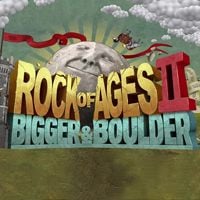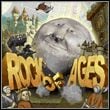Rock of Ages Video Game Series
Rock of Ages Series Evolution
2020
Rock of Ages 3: Make & Break
2017
Rock of Ages II: Bigger and Boulder
2011
Rock of Ages

Rock of Ages 3: Make & Break
Strategy
July 21, 2020
In Rock of Ages 3: Make & Break we take on the role of a ball whose task is to break through the enemy's defense and destroy the main target. The whole is kept in an extraordinary convention combining absurdity and grotesque with black humour.

Rock of Ages II: Bigger and Boulder
Strategy
August 28, 2017
A sequel to the hybrid of a strategy and action game. Similarly as the first title, it was created by ACE Team. The gameplay mechanics are mostly based on the first game in the series and are focused on competition between the players. Each player has a castle that they must protect. The castles are connected by a long, winding path. In each round one side of the conflict controls a giant ball and tries to use it to break through the gate of the enemy fortress. The opponent is trying to position his troops and buildings in such way that he stops or at least slows down the rock. Rock of Ages II: Bigger & Boulder allows up to four players split into two teams to compete. The title allows the player to modify the banners and costumes of units, introduces new soldier and rock types, and offers new maps that reference various historical periods. Unreal Engine 4 technology provides high-quality graphics.

Rock of Ages
Strategy
August 31, 2011
An unusual Tower Defense strategy game developed by ACE Team. The game was designed for two players. Each of them is being given a castle. One player must protect the gates of his castle from the opponent. The fortresses are connected by a long and winding road through which a giant, rocky ball is rolling. While the attacker is trying to control the ball in such way so that it hits the enemy’s gate with it, the defender focuses on positioning troops and buildings that will stop or slow down the opponent. After each turn the roles are swapped. Rock of Ages allows for playing online and on a single machine. The unusual graphics style is an advantage of the game – the levels were designed based on various art styles like renaissance, gothic and the works of Francisco Goya.
Rock of Ages Series News

Games With Gold for July 2021 (i.a. Planet Alpha and Rock of Ages III)
We've learned the games that will be coming to Xbox Live Gold and Xbox Game Pass Ultimate subscriptions in July 2021.
video games
Ignacy Ziarkiewicz
June 30, 2021